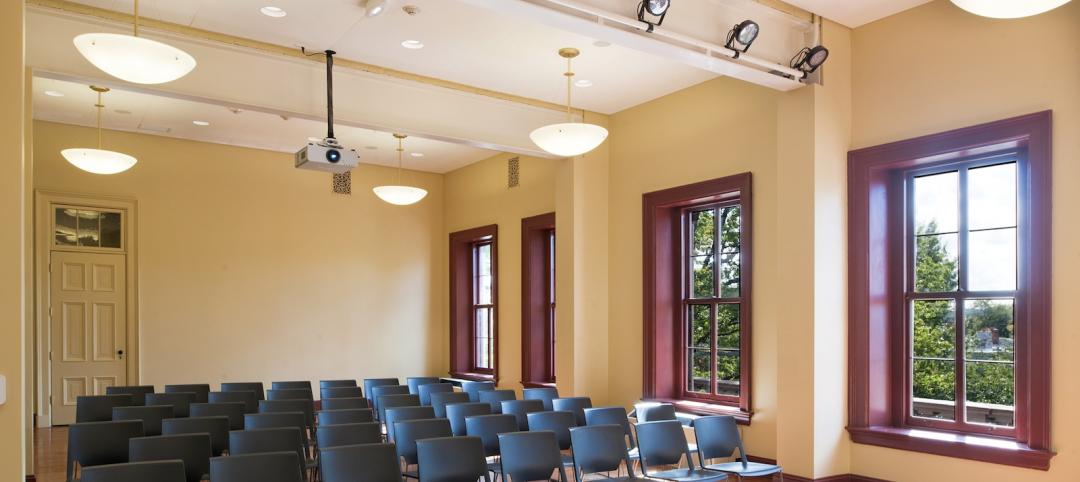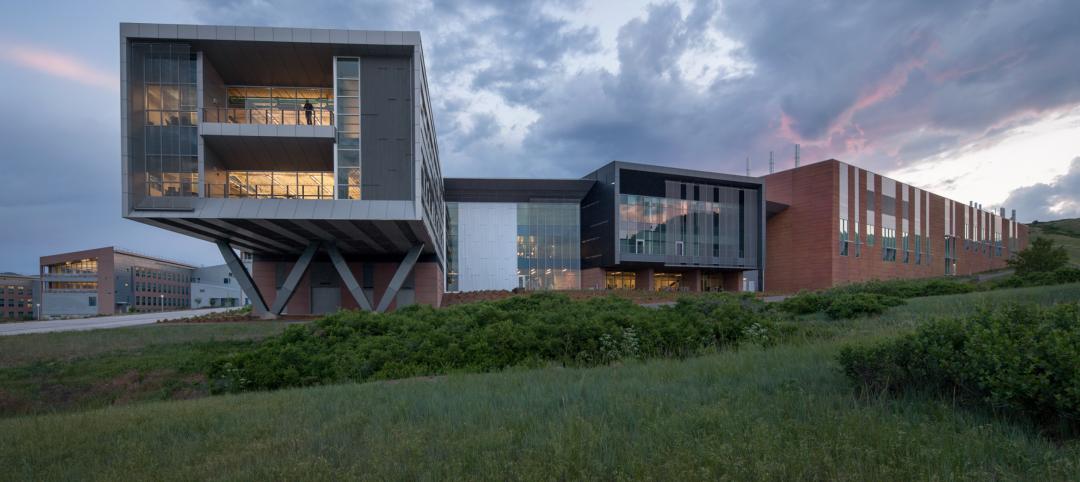BD+C: How is Duke’s capital projects program faring in this economy?
John Pearce: Compared to most, we are in good shape. On the university side of the campus, we finished most of our new building projects in 2008. We have had to slow down on building restorations, mostly to internal mechanical systems, but we continue to do feasibility studies on wish lists from the 10 schools on campus.
On the health systems side of the campus, we have two major projects: a cancer center and a major hospital expansion, about $600 million of work. A new $50 million education building for the medical school is also about to start construction.
With our master plan of 2000 in place, our trustees decided to link everything—financial projections, master planning, capital budgeting, etc.—so today it’s a much more report-based, developed approval process.
BD+C: Are students and faculty involved in capital projects?
JP: All of the board committees have students, faculty, and trustees; each committee reports to the Board of Trustees. Certain committees, including Facilities & Environment, have formal approval authority. On the design side, Duke has an internal review committee that meets every two weeks to deal with all the design issues for projects, with input from all of these groups. In the business and finance area, there are students who are very active, and we have one graduate student who is very big on sustainability.
BD+C: Speaking of sustainability, Duke has 26 LEED-registered projects, 16 of which are certified, including four Silvers, one Gold, and one Platinum. What is Duke’s policy on sustainability?
JP: In 1993, I prepared a set of design guidelines for the university, which have been updated over the years. We deal with a 50-year building, so you have to speak to the issue of quality materials and systems at every level—exterior walls, windows, roofs, mechanical systems, etc. When it came to introducing LEED to the campus, in 2002, we had a head start, and we made it immediately clear that we wanted a specific level of quality.
At first, we had to concentrate mostly on the site design requirements. We handle stormwater on a campuswide basis, and we’ve also separated our parking from our buildings, so this was a struggle for us because of how the USGBC defined the site. More recently, we’ve been concentrating on energy issues, such as the conversion from coal to natural gas and the use of central chilled distribution. These things don’t usually get us a lot of LEED points. Nevertheless, our standard is LEED Silver.
Duke has also signed the American College & University Presidents’ Climate Commitment to be carbon neutral by 2024, which happens to be the centennial of the founding of Duke University.
BD+C: Are you requiring the use of BIM on projects?
JP: We use design-build, and in some cases, those firms have suggested using BIM, but we have not required it. I think the jury is still out on BIM. My reaction is that a BIM system often makes a project design look more finished than it really is. It’s almost a gimmick. I find sometimes the project managers feel that BIM makes their job easier, but I worry that there may not be enough architecture and design requirements in the models. We’re being careful with BIM. It will probably happen, and it’s great not having ducts running through your steel beams, but I’m not sure about it as an upfront requirement.
BD+C: The $64 Question: How can design firms get work at Duke?
JP: I get calls from architects all the time, and the first thing I say is, Do your homework! Be serious. Find out about us. My website has our Action Plans, so don’t ask me what we have in the works—it’s all there (http://architect.duke.edu/planning/master_plan.html). My vendor list is 120 firms long, and we probably use 25 well-known firms.
Second, make sure the principal shows up for the interview, not just the marketing professional. I try to meet with firms, because I do enjoy learning from them, but often the marketer is pretty inexperienced. Who is the person who’s going to be dealing with the dean and the trustees? That person needs to be available. We interview in the standard way, and you can tell who knows what they’re talking about.
Also, you have to understand how the academic environment works. It’s a hydra-headed entity with many customers, all having various beliefs as to who is making the decision. It’s not the corporate world, where you might get a single decision maker.
Finally, you’d be absolutely amazed at how bad people’s references come through. References really need to be clean. You have to make sure that the person to be contacted will give the reference you desire.
All I want to know is what you can do specifically for Duke, based on your firm’s experience. Send a letter with the type of project you’re interested in and what projects you’ve done in that area—and send it electronically only.
BD+C: That’s great advice. Any other gems?
JP: I find that architects in particular, perhaps less so with contractors and engineers, often will give up too easily. They have this belief that if they just walk through the door they’ll get a project with us. If your firm wants to target Duke, or any major university, you’ve got to show that you really want work with us.
Related Stories
| Apr 4, 2014
$25 million Orion Jet Center designed by SchenkelShultz now open
As the centerpiece of the 45-acre campus, which is its first phase of a planned 215-acre mixed-use development, the 18,000 square foot executive terminal facility offers spacious passenger areas, administrative space, an executive suite, rental car kiosk, catering and a cafe.
| Apr 3, 2014
Security, accountability, and cloud access: Can you really have it all?
I’ve heard countless stories of conversations between project engineers and IT professionals who can’t come to an agreement on the level of security needed to protect their data while making it more accessible—not only externally, but also internally.
| Apr 2, 2014
The new model of healthcare facility management
A growing number of healthcare organizations are moving to an integrated real estate model in an effort to better manage costs, respond to regulatory requirements, and support changes in patient care delivery.
| Apr 2, 2014
8 tips for avoiding thermal bridges in window applications
Aligning thermal breaks and applying air barriers are among the top design and installation tricks recommended by building enclosure experts.
| Apr 2, 2014
Check out the stunning research facility just named 2014 Lab of the Year [slideshow]
NREL's Energy Systems Integration Facility takes top honors in R&D Magazine's 48th annual lab design awards.
| Apr 1, 2014
The risks of mismatched fire-rated assemblies
Mismatched fire-rated glass and framing happens more often than you think. Failing to confirm that the tested and listed performance capabilities of the framing system match those of the glazing can create a financial nightmare for the entire building team.
| Apr 1, 2014
Planned global commerce center breaks ground near Phoenix
When completed, PhoenixMart will be one of the largest single-level trade centers in the U.S.
| Apr 1, 2014
Paints, coatings and sealants: Choosing products and procedures for best performance
This course covers life cycle assessment, color selection, emissions, durability, resilience, corrosion resistance, specification standards, and other critical aspects of choosing coatings for interior and exterior walls, ceilings, and roofs.
| Mar 31, 2014
Extreme conversion: Soaring Canadian church transformed into contemporary library
Even before the St. Denys-du-Plateau Church was converted into a library, it was an unusual building, with a towering nave designed to mimic a huge tent inflated by the wind.
| Mar 31, 2014
Tips for creating a competitive bid using codes and loads
Landing a project feels like winning a prize, sort of like finding that forgotten $20 bill in the pocket of a pair of jeans you haven’t worn in a while. But living on the “chance” of winning a job isn’t a great way to pay your electric bill. So, how do you swing the chances in your favor?
















